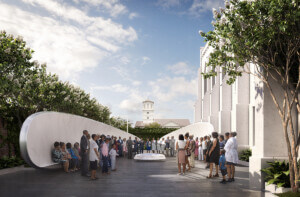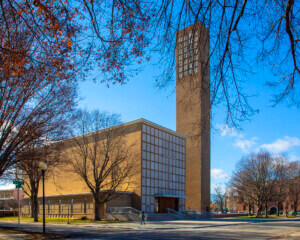Foundations for Adjaye Associates’ new multifaith complex in Abu Dhabi were laid long before the project broke ground in 2020. It began with a landmark antidiscrimination law, passed in 2015, that criminalized religious hate crimes against the three “divine religions” or Abrahamic faiths. In 2016, the United Arab Emirates established the Ministry of Tolerance and Coexistence, along with a tolerance hand sign that the Wu-Tang Clan would be proud of. Three years ago, the country issued the proclamation of a national Year of Tolerance, and the Pope and Al-Azhar’s Grand Imam signed the Document of Human Fraternity in Abu Dhabi. In September 2020, the Abrahamic Accords, in which the UAE and Bahrain normalized relations with Israel, were signed. Morocco and Sudan would soon follow.
Bringing together a mosque, a church, and the first new purpose-built synagogue in the region in a century, along with a secular pavilion, the Abrahamic Family House is the most visible expression of this shift. Three cubic forms, each with its own formation of columns, face different directions: They are oriented toward Makkah (Mecca), the rising sun, and Jerusalem for Islam, Christianity, and Judaism, respectively. The trio of worship venues is connected by an elevated central pavilion landscaped with local plantings and a cavelike visitor welcome center. It is a foreign policy document converted into architecture. “Ugly buildings for an ugly brief” was one friend’s reaction. But when I visited, shortly after its public opening, I found it unexpectedly beautiful.
The complex is located in Saadiyat Island’s Cultural District, the Emirati capital’s paean to Berlin’s Museumsinsel, and is surrounded by starchitecture. The whole gang is there: Jean Nouvel, Frank Gehry, Mecanoo, Tadao Ando, and Zaha Hadid Architects, each with a spectacular landmark museum that may or may not be completed. In contrast, the Abrahamic Family House is remarkably understated. Each house of worship has a courtyard with a triangular water feature and fruit trees: lemons for the mosque, oranges for the church, and pomegranates for the synagogue. The cubes are exactly the same size and made out of the same materials: Omani limestone, oak, and an off-white concrete made with aggregate from Saadiyat. All signage is in Arabic, English, and Hebrew. They differ in their architectural articulations and auxiliary spaces, which attempt to both symbolize and meet the functional needs of each faith.
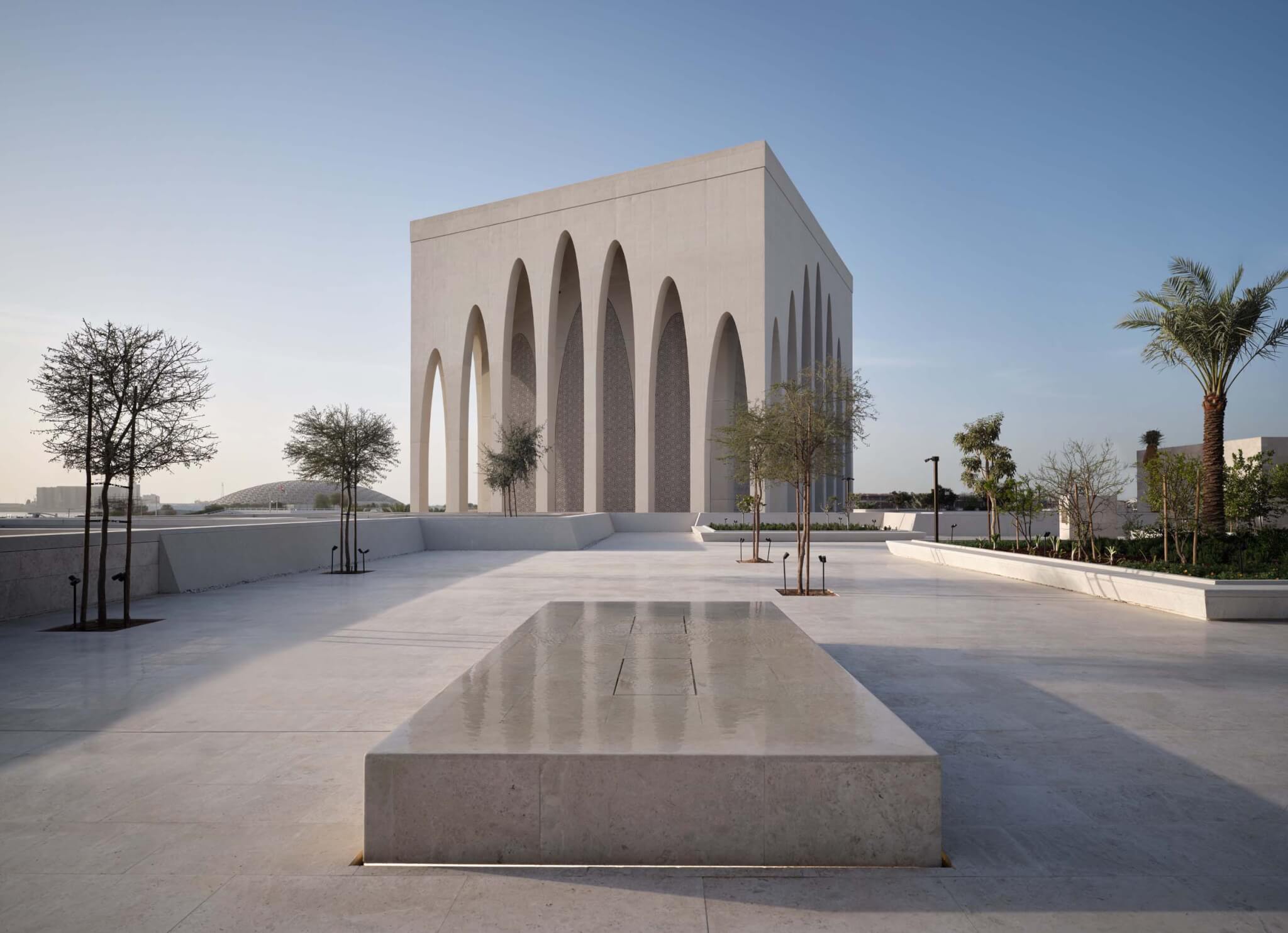
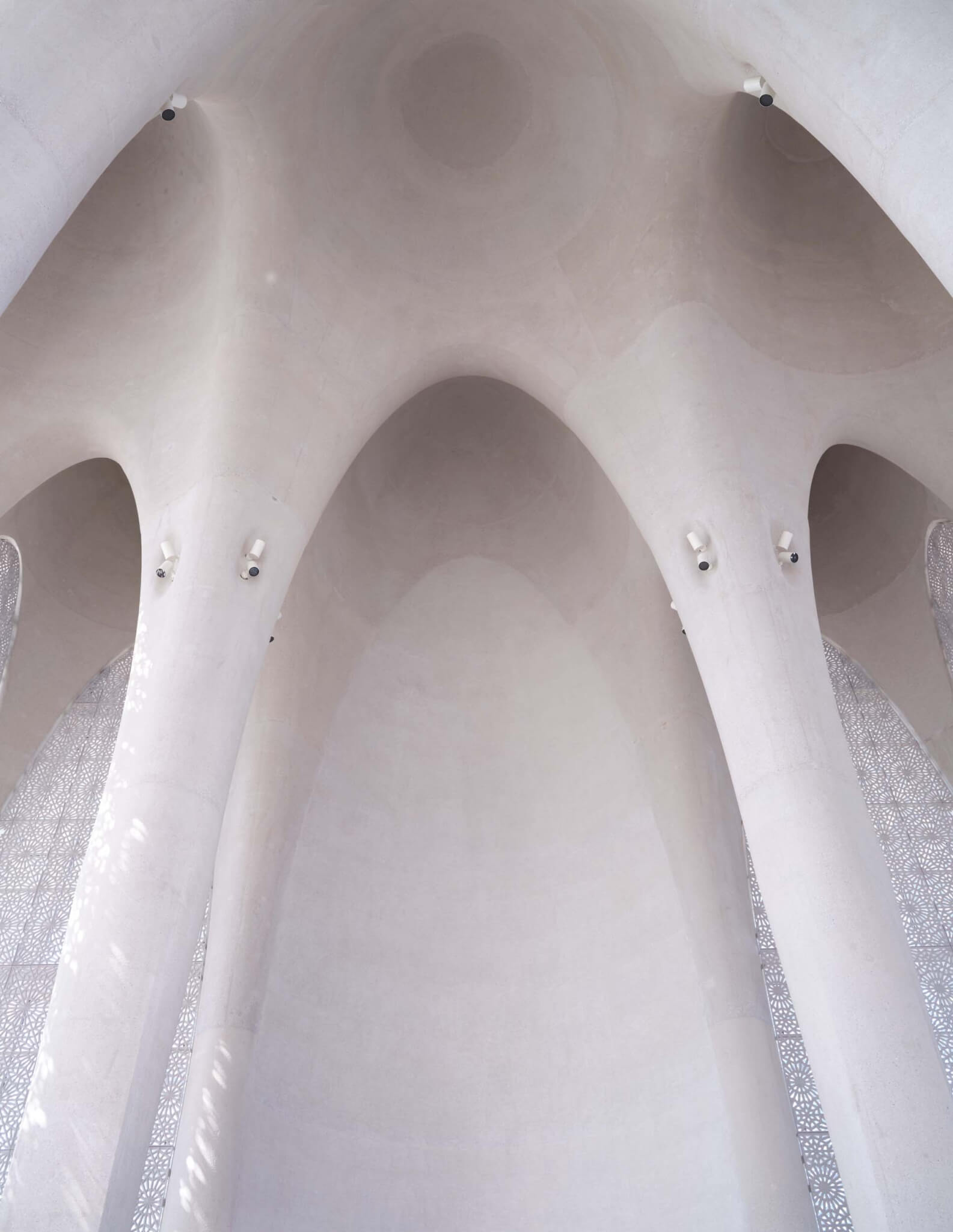
Graceful, elongated arches adorn the mosque, which has wider arched windows with a double layer of lacy mashrabiyat behind the full-height arcade. The understanding of light as a building material is handled with expertise through the complex; it is particularly effective here, as it casts a chiaroscuro of dappled light onto the prayer halls. Inside, four tulip-like columns seamlessly flow into nine tall vaults. Unlike the sharply defined ornamental muqarnas common in Islamic architecture, this vaulting is gently rolling in a way that suggests a spoon taken to an avocado. Two external bronze-fenced ablution spaces marry geometry to gender, with inverted spherical and pyramidal ceilings defining spaces for women and men, respectively.
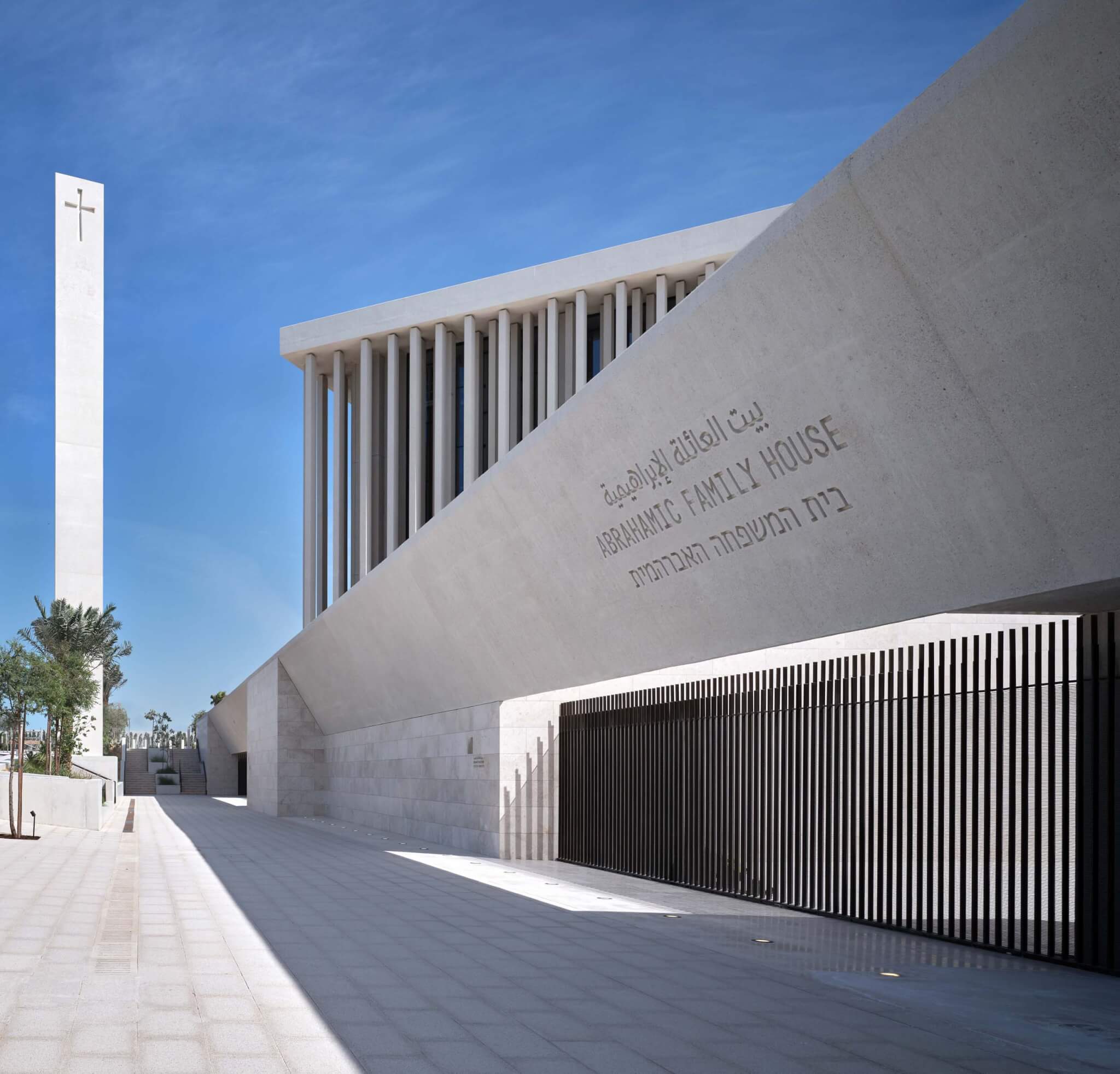
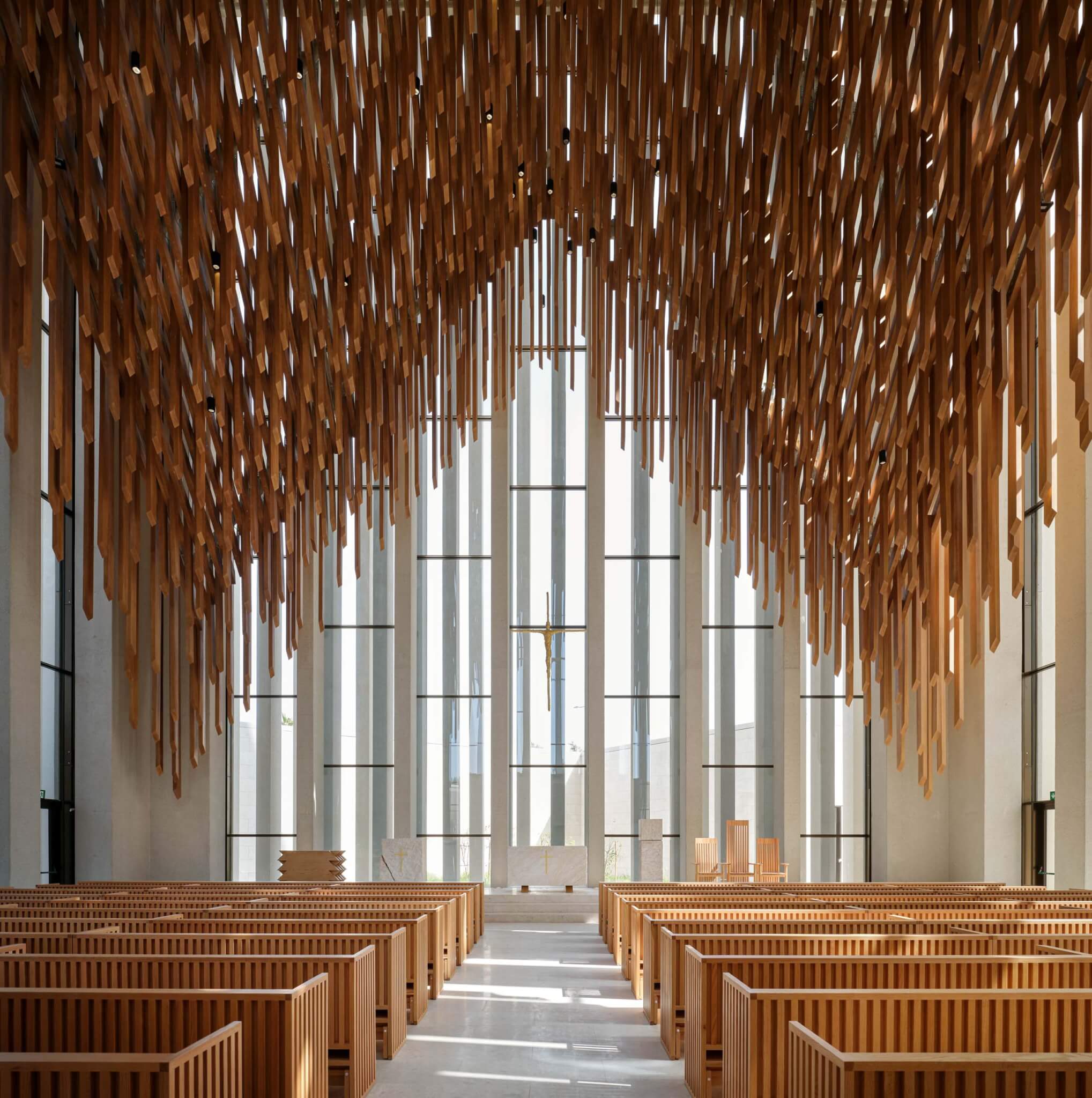
At the Christian church, thin, stringy columns make up its grim facade, inspired by shards of light. As with the synagogue, the church’s exterior form extends indoors, so this idea is echoed in both the pew design and the shower of timber battens descending from the ceiling, delivering power and austerity. The church includes a dramatically cracked ambo—symbolizing the word of God—with a serene octagonal baptistry. Here too, coexistence is factored into the design, but not among faiths so much as different Christian denominations. While the synagogue serves the UAE’s overwhelmingly Orthodox Jewish community, the church is set up to be used by both the country’s Catholic majority and Protestant worshippers. As such, specific symbolism has been stripped back to the bare minimum. A large, suspended golden cross, for example, is purposefully neither plain nor a crucifix but something in between.
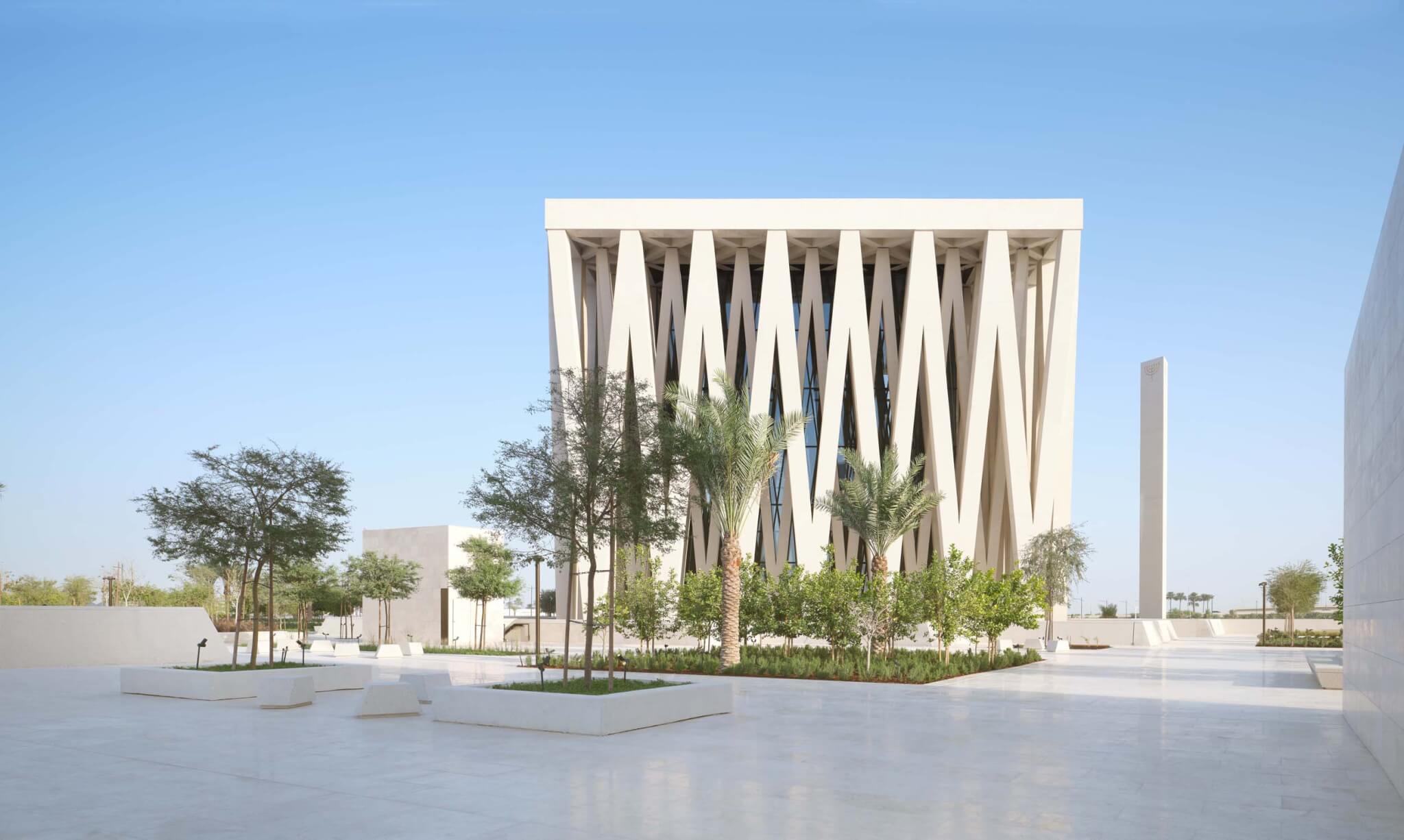
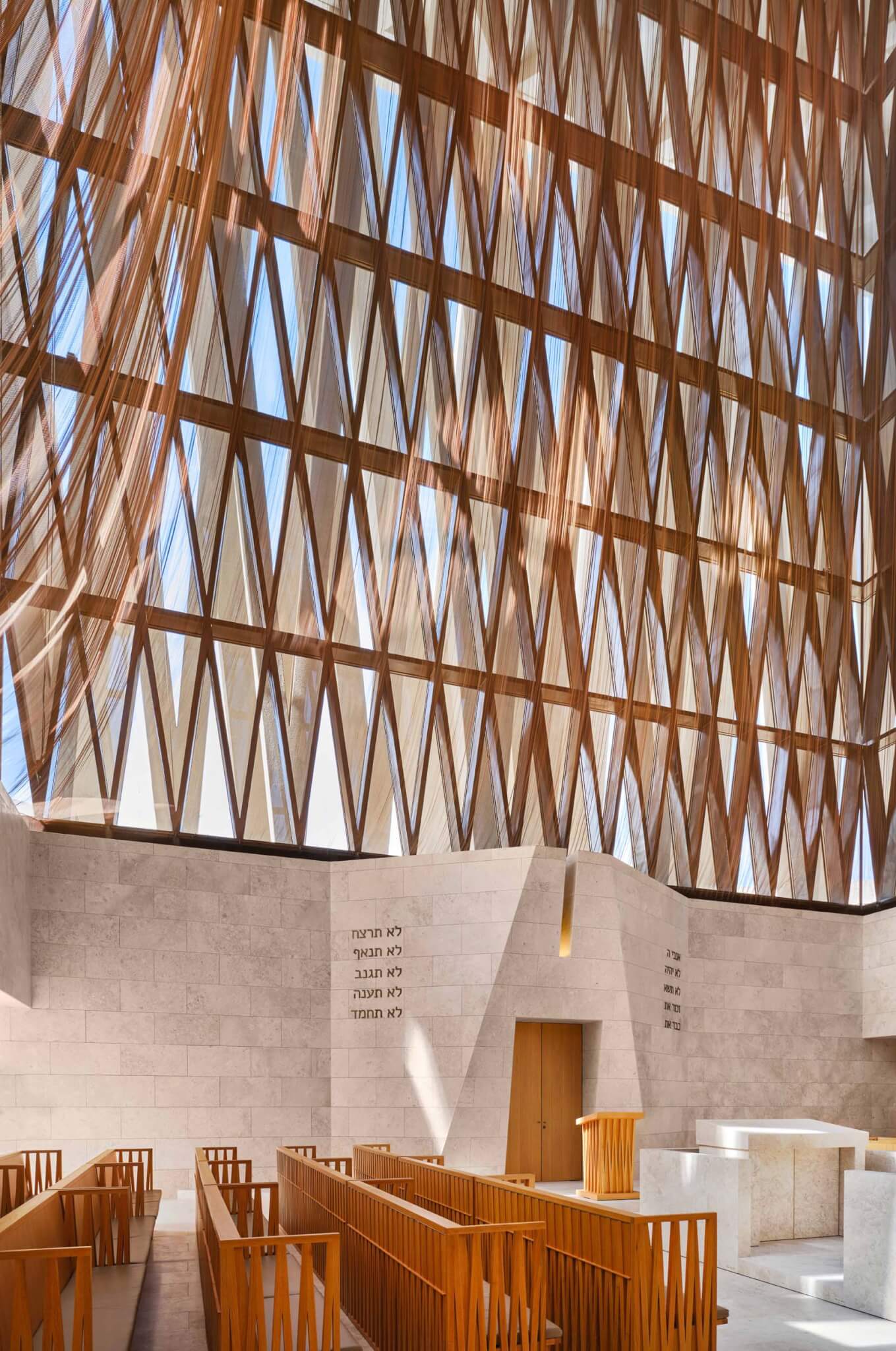
The synagogue is captivating. Its facade is surfaced in three overlapping layers of V-shaped columns, in reference to the palm fronds that are sometimes used to cover sukkahs, the temporary shelters erected for the festival of Sukkot. In reality, they’re more like metal elevator grates. (“It’s like designing a church based on a Christmas tree. … It’s like ChatGPT architecture,” design critic Tamar Shafrir remarked in a recent conversation.) There’s a preponderance of somewhat arbi- trary references here, not just in the shul but throughout the project. The columns touch the ground at seven points and the soffit at eight, indexing man and God. The synagogue interior has a bronze mesh inspired by the original Tabernacle, while the skylight somehow relates to a chuppah. But the overall effect is somehow very utilitarian and sensible, as if beauty were to be found not in splendor but in creating space for community.
Each place of worship includes an auxiliary space related to water and purification. For the synagogue, it is a mikvah, or ritual bath. Halacha or Jewish ritual law specifies that the water must be from natural sources like spring water or rainwater that directly fills a cistern. This poses a problem in the arid climate of the UAE, where water is desalinated from the sea, which is considered a spring too, but strict rules around conveyance mean it cannot be used. The solution thus far has been to truck in ice, which bypasses transport requirements even as it might not be the most environmentally sound option. This detail offers a small glimpse into the many small, mostly invisible negotiations the country is making to turn its ambitions of tolerance and coexistence into lived reality.
Rahel Aima is a writer from Dubai.








